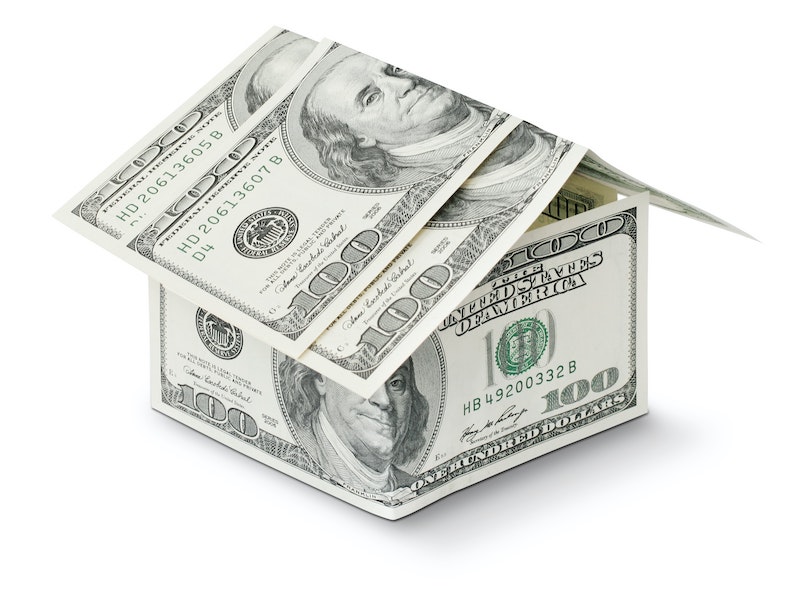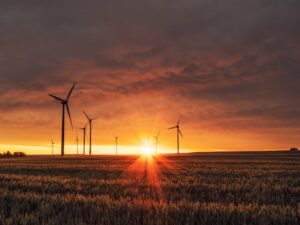The debt system is a house of cards
In 2021 global debt, that is, the total amount borrowed by governments, businesses and households, stood at an incomprehensible $303 trillion. Meanwhile, total global economic output amounted to $94 trillion, which means debt exceeds output by 322%. That debt has profound implications. It is a symbol of unsustainability and so long as it exists we can never create a sustainable society. To appreciate why we first need to think about how money is made.
Contrary to popular belief, the vast majority of money isn’t printed out by central banks, and it certainly doesn’t grow on trees. In the UK, The Bank of England and the Royal Mint only create about 3 per cent of the money in circulation as banknotes and coins.
The rest is ‘created’ by commercial banks, almost literally out of nothing, in the form of interest-bearing loans. Banks can issue loans far in excess of the money they hold in deposits. How this works is as follows;
“When a bank agrees a loan to a business or a household, it simply enters the amount as a loan on the asset side of its balance sheet and the same amount as a deposit on the liability side of its balance sheet. This deposit is then available to spend on goods and services in the economy.”
Jackson, Tim. 2016. Prosperity without Growth, p. 158
Capitalism is a system designed around the ability to raise capital. When commercial banks lend money, capital flows. That capital can then be used by governments to invest in society, businesses into innovations, entrepreneurs into new business ventures, and households into mortgages.
The fact commercial banks decide where capital flows, and where it doesn’t, means they have an enormous influence on shaping what the economy looks like.
Now, banks don’t exist to create social value but seek to maximise profits. Therefore, they tend to loan money to sectors and industries that guarantee a return. That’s why since 2015, the world’s 60 largest banks have provided $3.8 trillion of financing for fossil fuel companies, not because they want to lock in environmental destruction but because they are confident oil companies they will get a return on their investment.
The money system creates enormous profits for banks at the determinant of society and the environment. There is no connection between the social or environmental impacts of loans. The key parameter in decision making is, does this loan guarantee a return on investment? The implications are profound when we consider banks don’t prioritise investment in sustainable businesses and sectors.
But this barely touches the surface of the issues created by interest-bearing debt.
When a bank loans money at interest, clearly, they expect to be paid back. The economist Richard Douthwaite suggests the “fundamental problem with the debt method of creating money is that, because interest has to be paid on almost all of it, the economy must grow continuously if it is not to collapse.” (Douthwaite, R. 1999. The Ecology of Money, p. 24)
Debt creates a growth imperative, which is why companies operating in competitive markets must maximise profits, and it’s why the economy must continue to keep growing because debt can only be paid back at interest if the economy continues to grow.
The issue with this is that the global economy already far exceeds the earth’s carrying capacity. If it keeps on growing, it means we need even more inputs of resources and energy to create even more goods and services. The ecological crisis is an undesired outcome of growth, so if the economy keeps on growing emissions will continue to increase, habitats will continue to be destroyed, and biodiversity will continue to collapse.
Growth may well compel increasing environmental impacts, but the real dilemma is for economic growth to continue indefinitely, it must be possible for the economy to grow indefinitely.
Ecological economics centres on the fact that due to thermodynamic laws that govern energy, infinite growth on a finite planet is impossible. As Kenneth Boulding puts it, “anyone who believes that exponential growth can go on forever in a finite world is either a madman or an economist.” But the laws governing energy create profound implications. If it’s impossible for growth to continue forever on a finite planet, it means it’s impossible to pay back interest-bearing debt.
When we start hitting ecological limits and the economic growth machine begins grounding to a halt it will become clear the $303 trillion of debt can never be paid back. That has profound implications because it will lead to mass defaults and the collapse of the financial system.
Clearly, no one wants that, so what’s the solution?
The only viable one is if we return to an interest-free banking system. As the economist Herman Daly puts it;
“One hundred percent reserves would put our money supply back under the control of the government rather than the private banking sector. Money would be a true public utility, rather than the by-product of commercial lending and borrowing in pursuit of growth.”
Daly, Herman. 2008. “A steady state economy.” Sustainable Development Commission
For powerful vested interests, such a solution is unthinkable and one they will never accept because they will lose all of their power and influence if they did.
The thing is though there is nothing anyone can do about limits to growth because you can’t change the laws that govern nature. Inevitably, we’re going to hit a brick wall and the financial system, which has always been a house of cards, will collapse. Financial collapse will undoubtedly lead to chaos, but it will also offer an opportunity to create a sustainable society; one where each person’s needs are met within ecological limits. So long as global debt exists, creating such a society simply isn’t possible.



